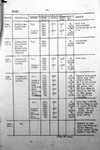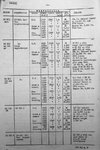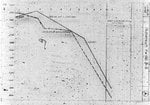Many thanks for the grapf, Tante Ju.
You did not stated the RPM, the 3rd part of the 'power triade'. Jumo-213 was making 3250 rpm for Notleistung, 603A was doing 2700; for Steig Kampfleistung it's 3000 vs. 2500. A 20 or 25 % bonus at RPM of Jumo-213A was able to practically cancel the 26% displacement advantage of the DB-603
Agreed. But way too late to make a point in ww2.
As seen from previous post(s), the 603A was a troublesome item in 1943.
Hmm, maybe the DB needed to dump 603 and concentrate to 628/605L, the two stage engines?
Well, with a full 1943 to work out the bugs out of 603A (during that time maybe banning the Notleistung, as in 601E/605A case?), the engine became reliable in late 1943/early 1944. The early Fw-190/603A, with debugged engine would be a performer. So would be the Fw-190/213A (like the future D-9), but someone decided that 1st Jumo-213As are of better use in twin engined planes. Hence the LW was forced to make do during daylight with, now sub par, Fw-190A-7/A-8 and Bf-109G-6 just in time the USAAF deployed P-51B/C and increased the range of it's P-47s.
The DB-603 with 2250HP for 1944 would need a more significant push by RLM and canceling some resource-eating DB projects, earlier in the war.
The Jumo 213 used a compression ratio of about 6.5:1 whereas the DB603 used a compression ratio of 7.5:1 and likely 8.5:1 for C3 optimised versions. The 603 also had more swept volume.
Thus the Jumo 213 would need to use considably higher pressure ratios to achieve the same power as the 603.
Hence the single stage supercharger on the 603 would have more reserve for altitude compensation.
You did not stated the RPM, the 3rd part of the 'power triade'. Jumo-213 was making 3250 rpm for Notleistung, 603A was doing 2700; for Steig Kampfleistung it's 3000 vs. 2500. A 20 or 25 % bonus at RPM of Jumo-213A was able to practically cancel the 26% displacement advantage of the DB-603
Both engines moved towards two stage supercharges both with and without inter cooling.
Agreed. But way too late to make a point in ww2.
The Db603 seems to have been ready nearly 1 year before the Jumo 213.
As seen from previous post(s), the 603A was a troublesome item in 1943.
It seems to me that with the benefit of hindsight that the huge effort put into the DB604 could have been redirected to the DB603 and even 605 since the X24 DB604, despite its good test results was cancelled in favour of the Jumo 222. One would then at least expect the DB603 to level peg with the DB605 but with about 30 % more power well ahead of the Jumo 213 in timeline and also altitude performance.
Hmm, maybe the DB needed to dump 603 and concentrate to 628/605L, the two stage engines?
Something like a Fw 190D13 or even Me 309 could have been in production around mid 43 in time to meet the P-51B onslaught starting December 43 with an engine offering better altitude performance than the BMW801 and about 15-20mph drag reduction. With potentially 2250hp on tap in early 44 some 444 mph should have resulted. A rather fast Ju 88S bomber or Ju 88G night fighter would have resulted.
Well, with a full 1943 to work out the bugs out of 603A (during that time maybe banning the Notleistung, as in 601E/605A case?), the engine became reliable in late 1943/early 1944. The early Fw-190/603A, with debugged engine would be a performer. So would be the Fw-190/213A (like the future D-9), but someone decided that 1st Jumo-213As are of better use in twin engined planes. Hence the LW was forced to make do during daylight with, now sub par, Fw-190A-7/A-8 and Bf-109G-6 just in time the USAAF deployed P-51B/C and increased the range of it's P-47s.
The DB-603 with 2250HP for 1944 would need a more significant push by RLM and canceling some resource-eating DB projects, earlier in the war.



